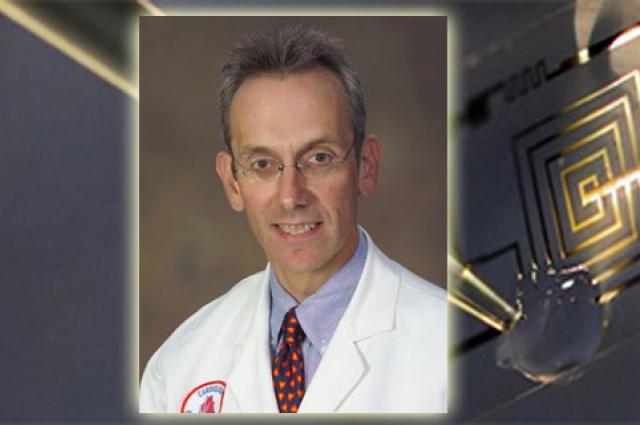Total Artificial Heart Creator Now AIMBE Fellow
AIMBE Fellows are nominated each year by their peers and represent the top 2 percent of the medical and biological engineering community. The College of fellows is made up of the most imaginative and distinguished medical and biological engineers in academia, industry and government who have had major impact in biomedical devices and processes, treatment of diseases and public policy.
Slepian is co-founder, chief scientific officer and chairman of the Science Advisory Board for SynCardia Systems Inc., maker of the CardioWest Temporary Total Artificial Heart and a Forbes top 100 American promising company. The Total Artificial Heart, developed at the UA, is the world’s only approved bridge-to-transplant replacement heart. The device completely replaces the blood-pumping function of a diseased heart in patients with end-stage congestive heart failure, supporting them until a human heart transplant can be performed.
Most recently, Slepian is credited with helping develop a new class of small, high-performance biodegradable electronics capable of completely dissolving in water or bodily fluids. Potential applications for this transient technology include medical implants, consumer electronics and environmental monitors.
Photo courtesy of Beckman Institute, University of Illinois and Tufts UniversitySlepian said the biodegradable device technology came out of previous research on stretchable electronic circuits that can be placed on balloon catheters for cardiovascular treatments.
"At the time of development of stretchable electronics it became clear, 'Why don’t we take this technology a step further and make it altogether biodegradable?'" Slepian said.
Researchers already have demonstrated several applications for the technology, including a fully transient 64-pixel digital camera and an implantable applique designed to monitor and prevent bacterial infection at surgical incisions.
The transient medical devices could also open up new therapies, such as devices that gather and transmit data for a specific time then are absorbed by the body when their jobs are done.
"We are thinking about marrying this technology with existing devices, for example the Total Artificial Heart," said Slepian. "Ideally, we’d like to be able to implant transient sensors along with the device, for example pressure sensors that keep track of the blood pressure in the pulmonary artery or the aorta for the first two weeks after surgery. This would help immensely with the management of such patients."
Other potential medical applications range from catheters that dissolve once they are no longer needed to temporary sensors measuring kidney or lung function.


